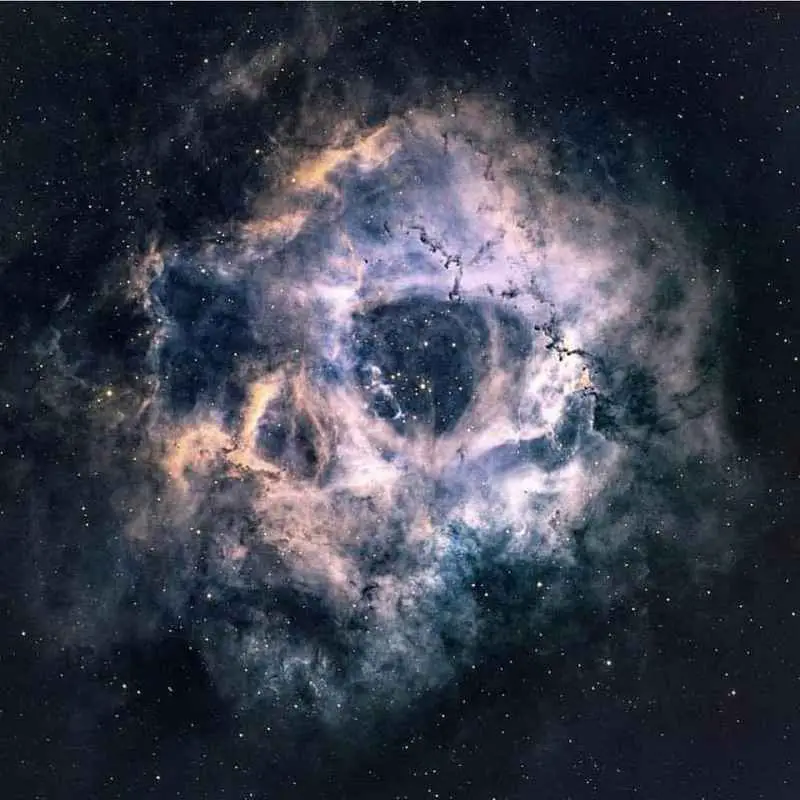
Rosette Nebula
The Rosette Nebula is an H II region located near one end of a giant molecular cloud in the Monoceros region of the Milky Way Galaxy. The open cluster NGC 2244 is closely associated with the nebulosity, the stars of the cluster having been formed from the nebula's matter. The complex has the following New General Catalogue designations: • NGC 2237 – Part of the nebulous region • NGC 2238 – Part of the nebulous region • NGC 2239 – Part of the nebulous region • NGC 2244 – The open cluster within the nebula • NGC 2246 – Part of the nebulous region. The cluster and nebula lie at a distance of 5,000 light-years from Earth and measure roughly 130 light years in diameter. The radiation from the young stars excites the atoms in the nebula, causing them to emit radiation themselves producing the emission nebula we see. The mass of the nebula is estimated to be around 10,000 solar masses.

